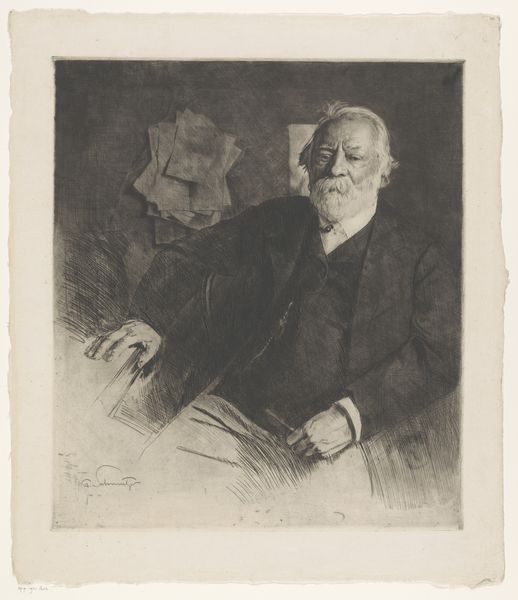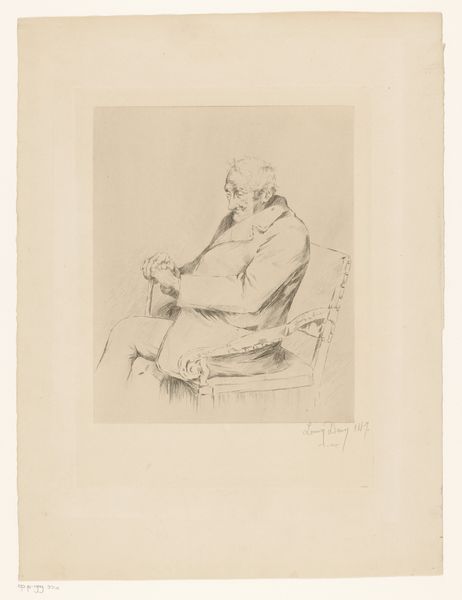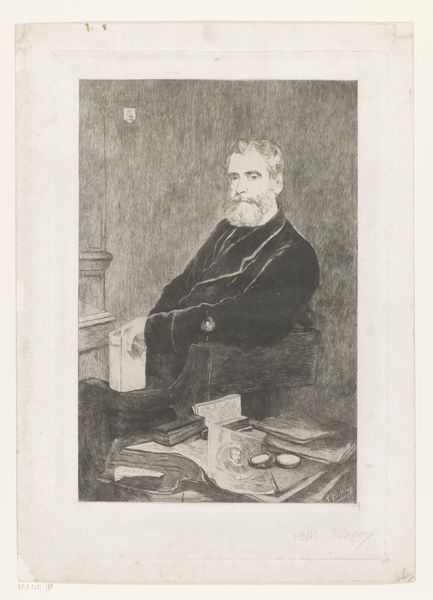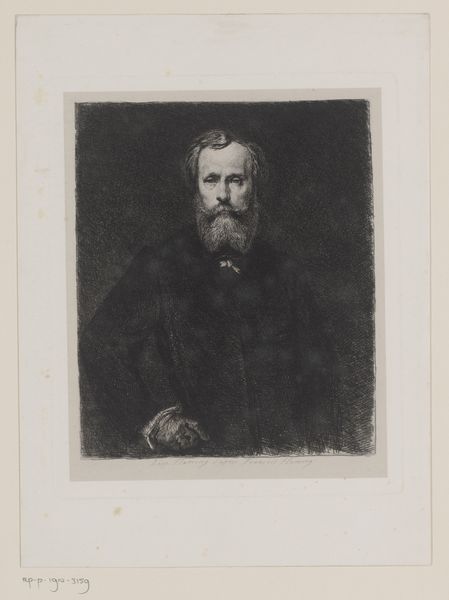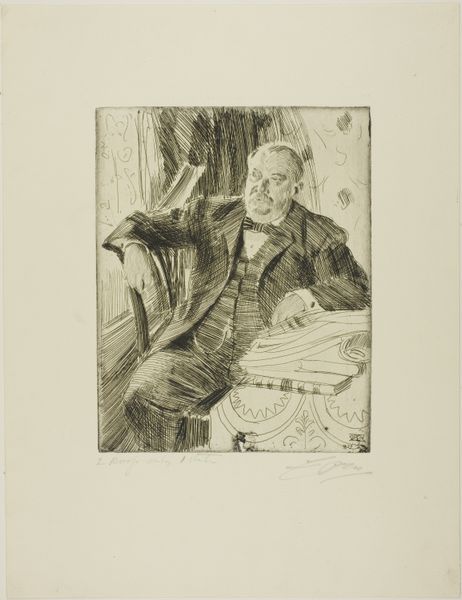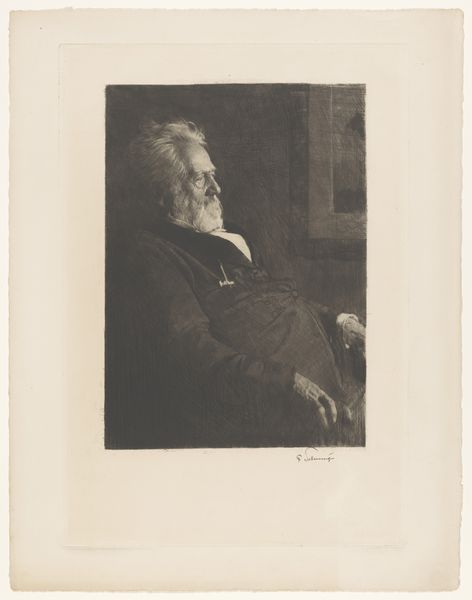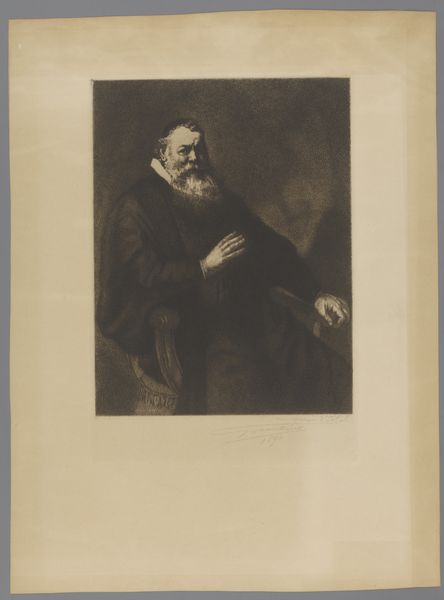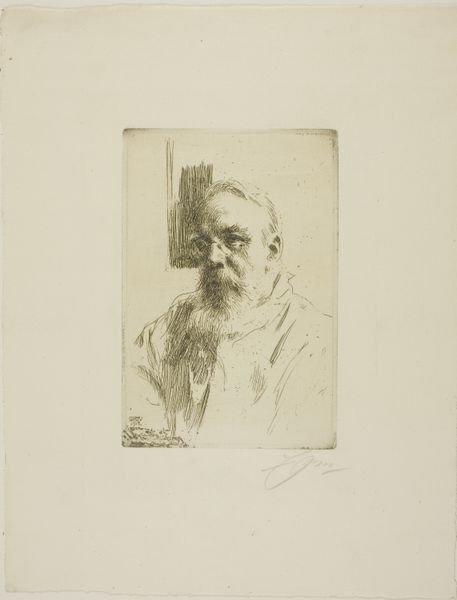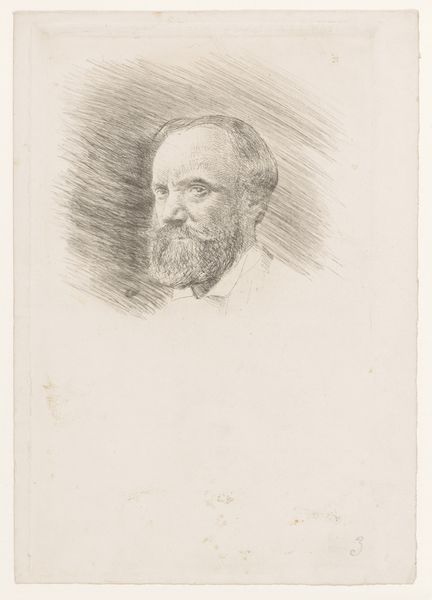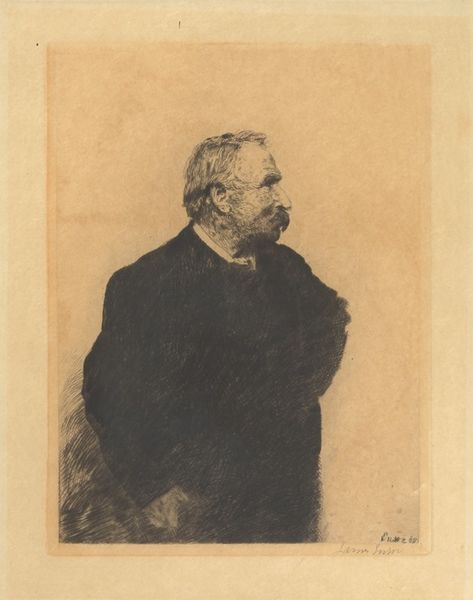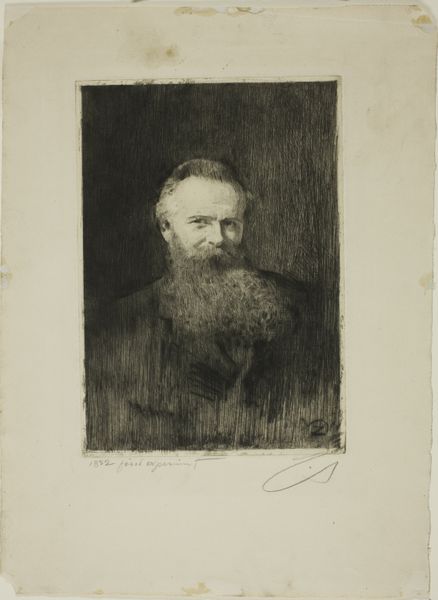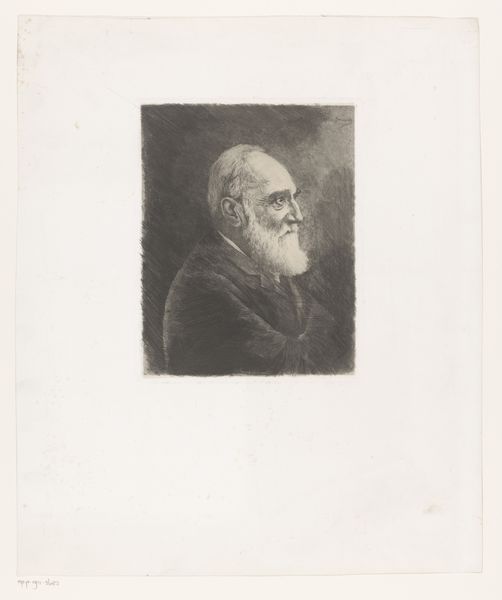
Dimensions: 336 × 298 mm (image/plate); 575 × 415 mm (sheet)
Copyright: Public Domain
Curator: Let’s turn our attention to Paul César Helleu’s "Portrait of Alexis Rouart," an etching dating back to 1897. It currently resides here at The Art Institute of Chicago. What's your initial take on this piece? Editor: The starkness of the etching immediately strikes me. There’s a sort of vulnerability revealed through the medium, the starkness feels revealing. The subject, Rouart, seems very comfortable in his well-made clothes. The materials are understated yet luxurious. Curator: Indeed. Helleu's command over line is impressive. Notice how he utilizes the etching technique to define the contours of Rouart’s face and beard, achieving depth with varying densities of lines. It's a study in contrasts, light and shadow. I believe the lines guide the eye intentionally throughout the piece. Editor: The cross-hatching really draws my attention to the making of the artwork. I think it's important to note that the printmaking process also lends itself to larger production numbers. We are afforded the opportunity to view the lifestyle of this patron, Alexis Rouart, in an accessible manner. The intimacy of the pose is juxtaposed with a potential democratization. Curator: That's a compelling observation about the process itself affecting distribution. The lines in the piece articulate much more than form, also, expressing the mood of thoughtful reflection of a dignified man. Do you find anything interesting in the backgrounds? Editor: Definitely. Helleu creates depth by implying his subject’s social and artistic world. By showing shelves filled with paintings and curios, we learn so much about his trade. Helleu doesn't romanticize his materials or Rouart. It feels like an honest reflection on labor and privilege. Curator: I agree it reflects a direct, unadorned observation, yet carefully framed. Looking closely at this portrait reveals a beautiful visual tension. Editor: Seeing "Portrait of Alexis Rouart" allows for examination beyond the purely visual. It provides space for us to think about labor, art production, and accessibility during this period, offering insights that are grounded in the lived realities of both the artist and his subject.
Comments
No comments
Be the first to comment and join the conversation on the ultimate creative platform.
